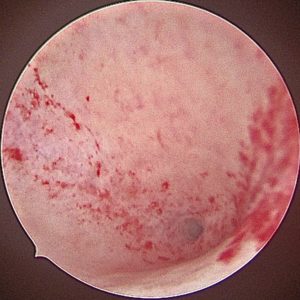Hysteroscopy procedure
Hysteroscopy is an endoscopy procedure that is done to see the inner lining of the uterus where the embryo or baby implants and grows.
It can be diagnostic or operative based on the condition. A hysteroscope is a thin, lighted telescope-like device that is inserted into the uterine cavity. A fluid-like NS or glycine under controlled pressure flow is used for distension and better visualization of the uterine cavity.
Office hysteroscopy can be done without anesthesia but short general anesthesia is given to avoid pain and discomfort during the procedure.

There are many indications for doing diagnostic hysteroscopy. Submucous polyps and synechiae can be treated in infertile patients before IVF treatments.
Hysteroscopy is also done to find the cause of abnormal uterine bleeding which may be due to benign growths like polyps and fibroids or sometimes cancer growths in the uterus. A hysteroscopy-directed biopsy is a gold standard to confirm the diagnosis.
